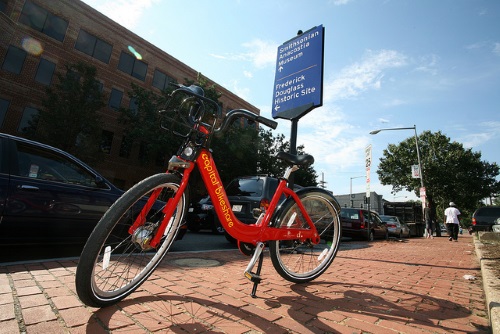The advocacy group Alliance to Save Energy issued a new 42-page report on Sept. 26 that calls for cutting U.S. transportation energy use by 50 percent by 2050 – a target the group dubbed the “50×50” goal – while also improving mobility through more use of ride-sharing, electrification, autonomous vehicles, and other technologies.
[Above photo courtesy of DDOT]
“We have a once-in-a-century chance to responsibly rethink mobility,” said Scott Keogh, Audi of America’s president and chair of ASE’s new 50X50 Commission, in a statement. “The rapidly advancing technologies of electrification, automation and connectivity will not magically produce the best results. It’s only together—industry leaders, policymakers and consumers—that we can build a pathway to a future with the most potential.”

The alliance – comprised of vehicle manufacturers, utilities, environmental and consumer groups, unions, technology companies, and public officials – called on policymakers to not only seek to enhance the energy efficiency of vehicles and components, but also to capitalize on new technologies so as to transition to an efficient, integrated, and improved “transportation services” model where the most efficient transportation modes – e.g. public transit, rail, biking, and walking – are integrated into a system-wide approach with other vehicle options.
“This will require: strengthening public transportation systems; enhancing freight system efficiencies; reducing passenger vehicle miles traveled; facilitating transitions among different transportation modes; and enhancing integrated systems at transportation hubs such as ports, airports, and distribution centers,” the group noted.

“A system-wide approach will require multi-stakeholder coordination and technology development to address major uncertainties, especially for fast-evolving data and analytical capabilities and vehicle automation. Addressing inconsistencies across the U.S. policy and regulatory landscape that directly hinder the 50×50 goal is also imperative.”
“With transportation responsible for 30 percent of energy consumption in the United States, the 50×50 Commission’s recommendations serve as a route map to guide this transformation of the transportation sector,” added Paul Skoutelas, president and CEO, American Public Transportation Association. “Increased public transportation is pivotal to meeting the goal of reducing our energy use by 2050, and we look forward to working with policymakers at every level of government to turn these recommendations into action.”

Many state departments of transportation are already making moves similar to those policy proposals. At the American Association of State Highway and Transportation Officials annual meeting in Atlanta Sept. 20-24, Toks Omishakin, co-chair of the Council of Active Transportation, highlighted several of the “active transportation opportunities” the Tennessee Department of Transportation is encouraging via its multimodal access grant program, which wrapped up its 2018 application process of Sept. 28. Those grants are state-funded at 95 percent with a 5 percent local match, TDOT noted, with total per-project costs capped at $1 million.
That state-funded program supports the transportation needs of transit users, pedestrians and bicyclists through infrastructure projects that address existing gaps along state routes, Omishakin said.
“With half of all trips in the United States being three miles or less, good walking, biking and transit facilities are essential to the continued growth and success of our towns and cities,” he noted.
 Nation
Nation
The Stream by AASHTO: Electrified Roadway Testing
December 5, 2025 Nation
Nation

